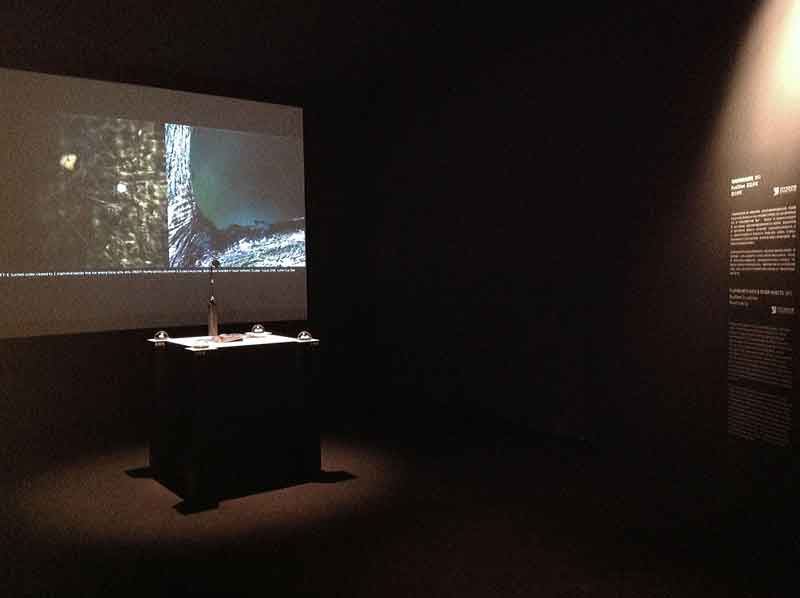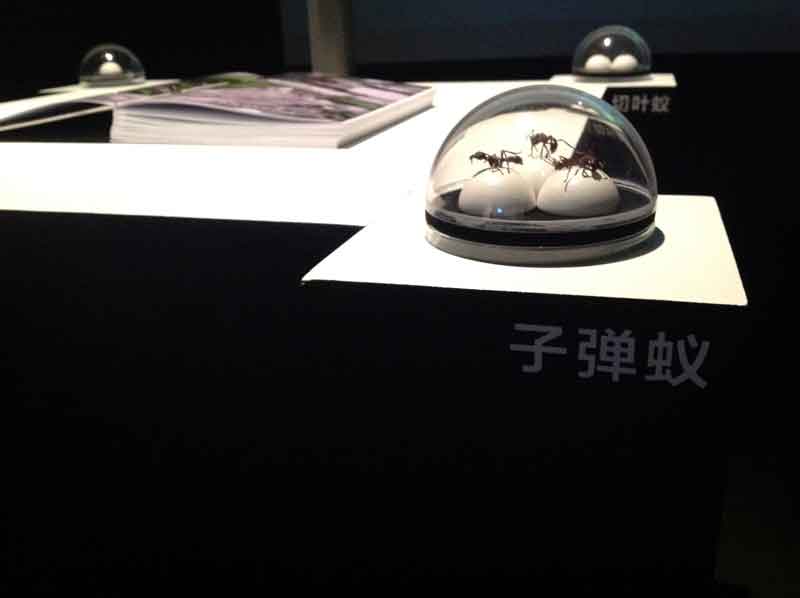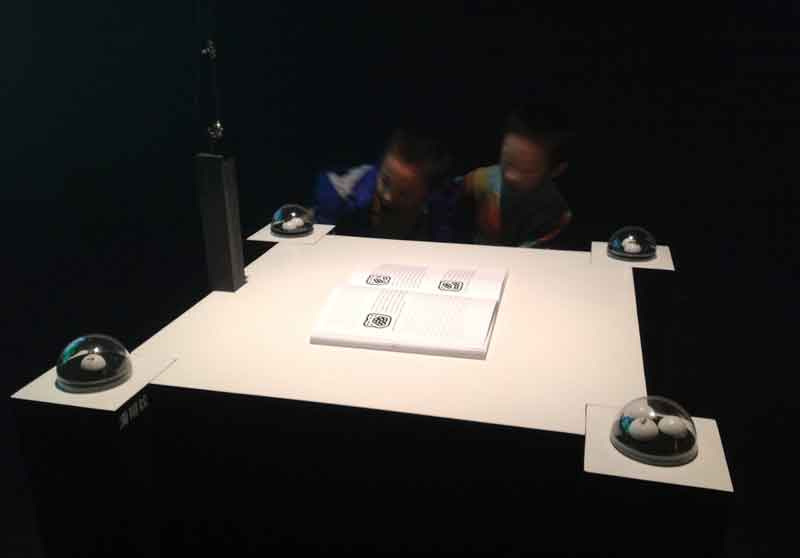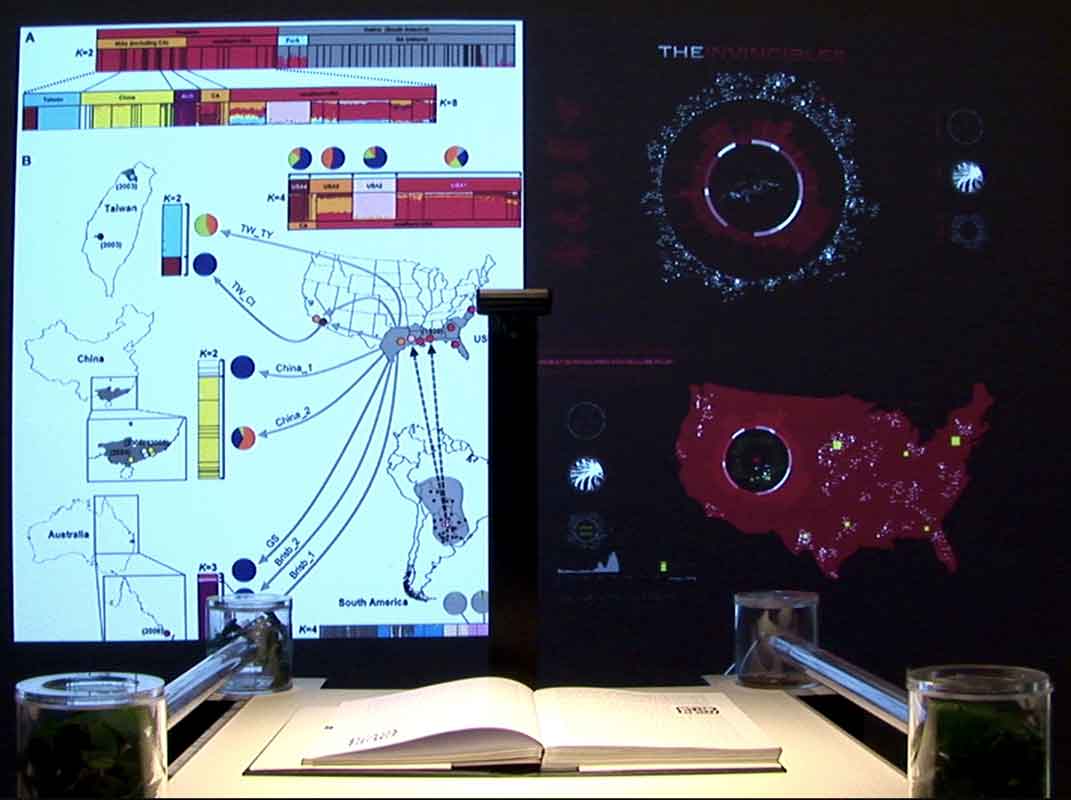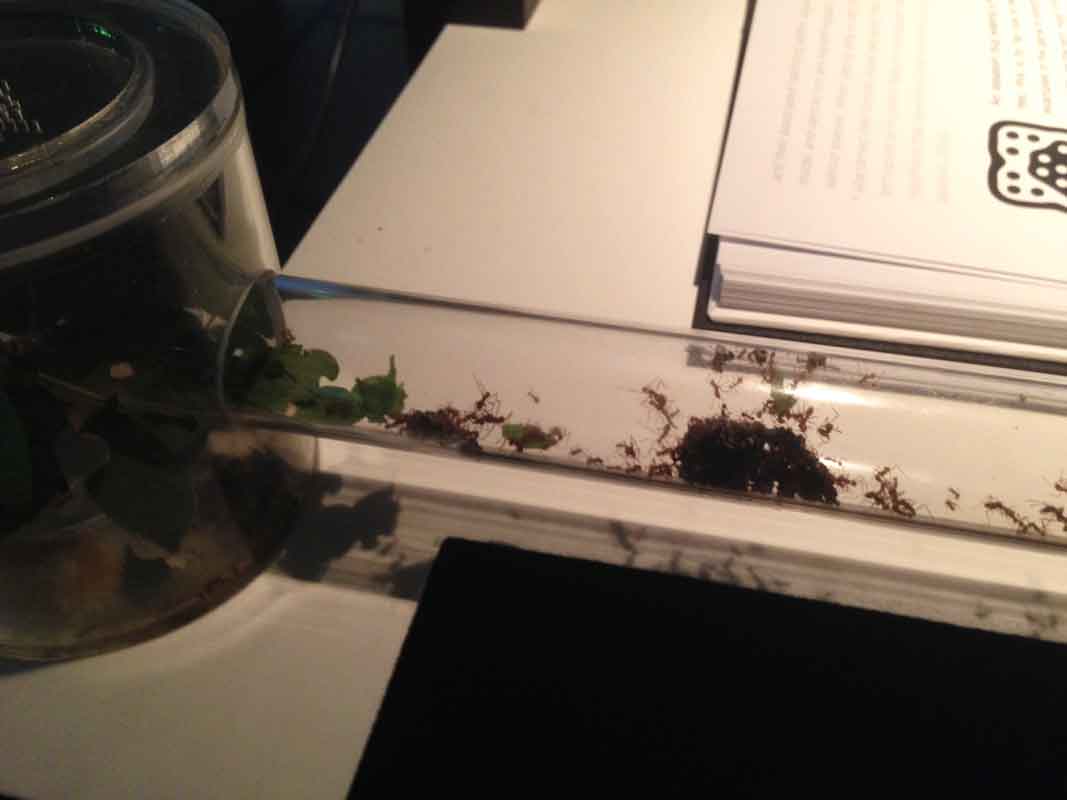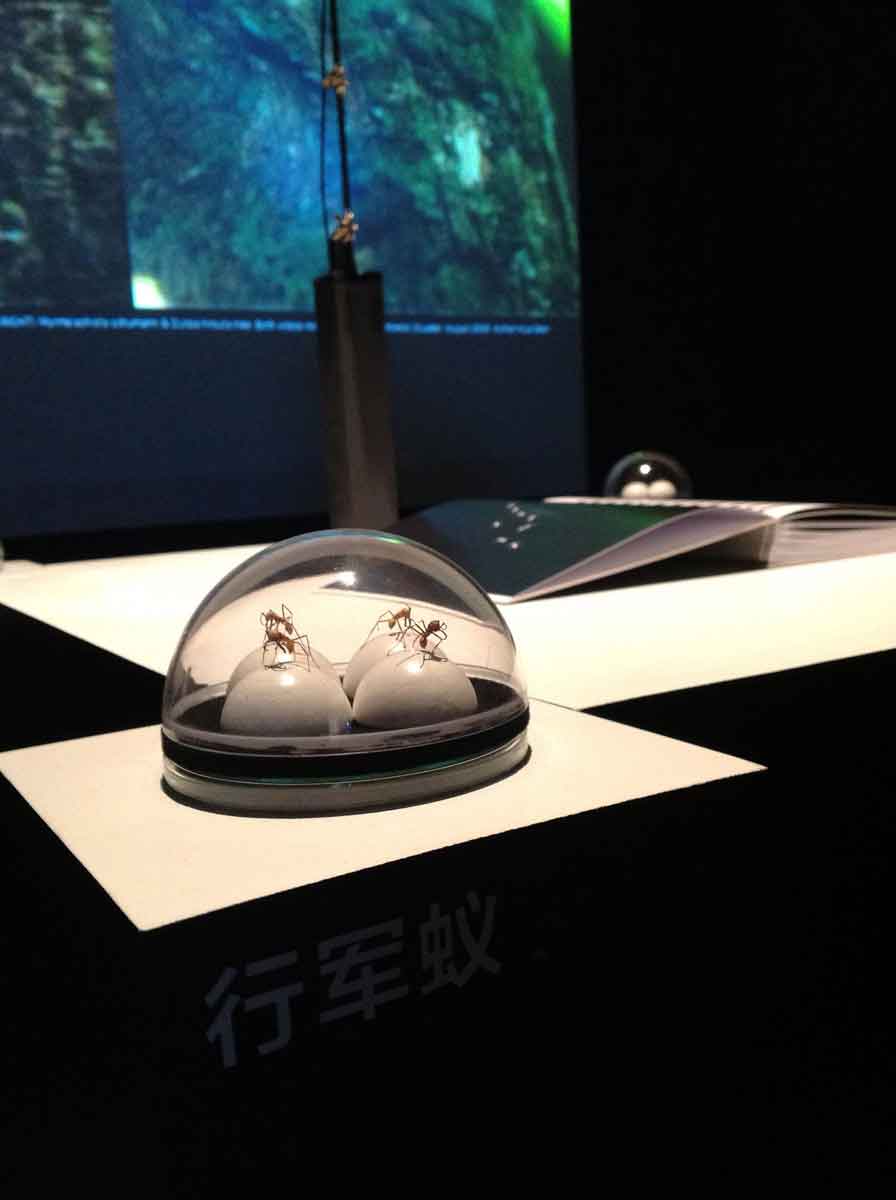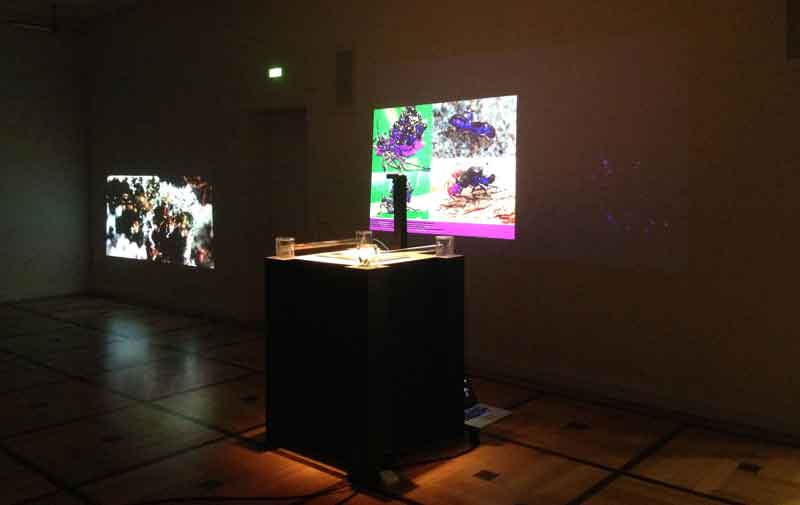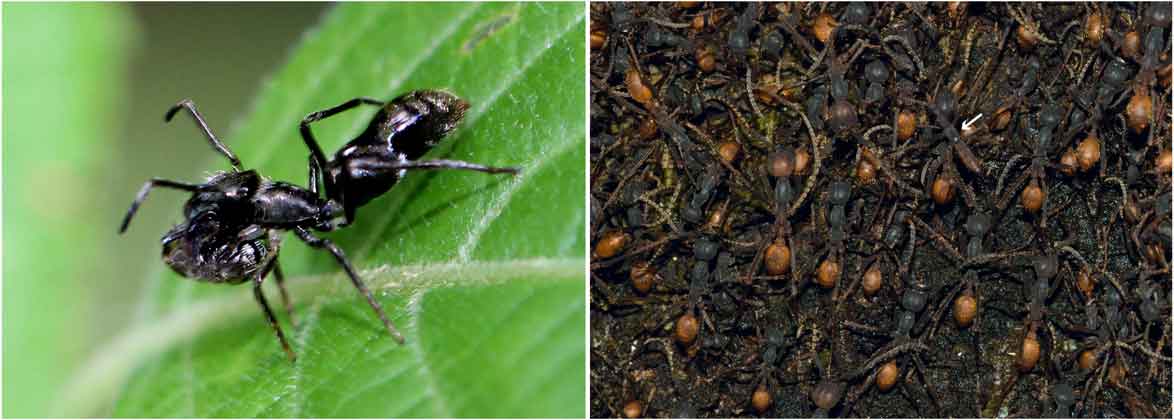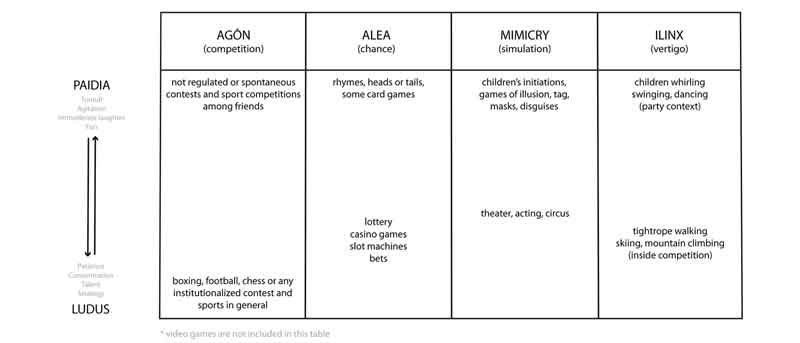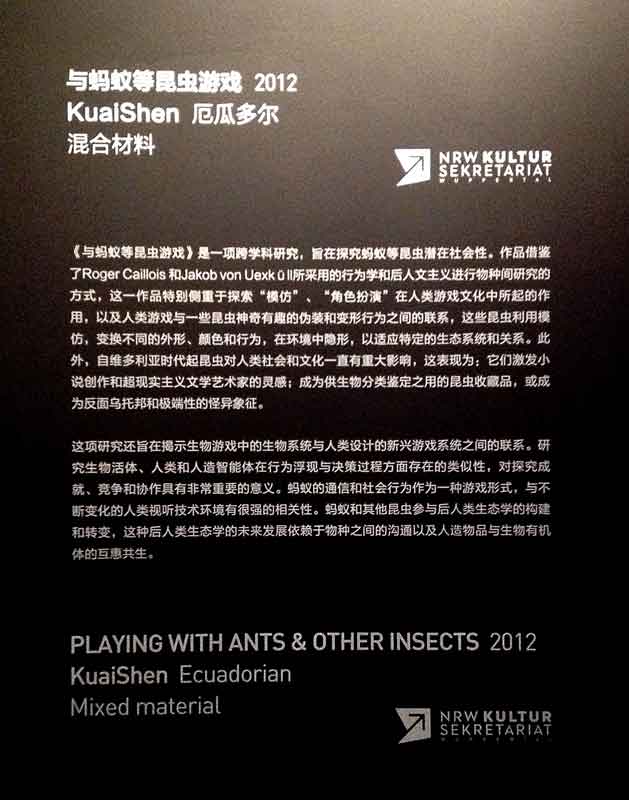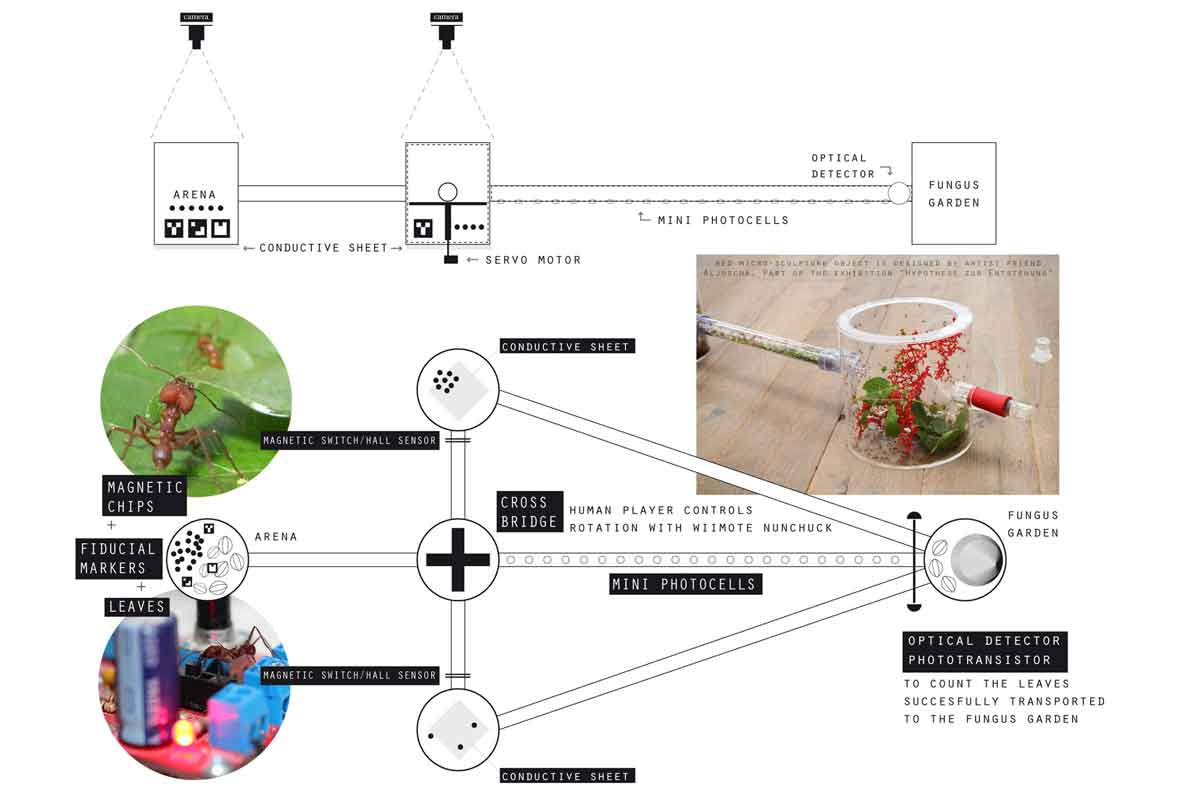The installation focuses specially on emergent gameplay and the role of mimicry in the human culture of play, mainly in games of make-believe, in other words, role-playing games (the use of masks, disguises, pretending to be someone else, assuming the role of avatars and other video game characters). This genre of video games, and human play manifestations in general, can be associated with that strange and fascinating behaviour of some insects which camouflage and deceit their hosts, predators, or prey by assuming different forms and colours. These are regarded in my work as organic living avatars who either become invisible to predators, they confuse the senses of others, behaving or looking like something they are not in order to exploit resources or get protection in the complex ecosystems they live; in other words, a strong association is made to the “player perception vs. video game environment’” which is supported by what Caillois addressed as mimicry as form of play in humans. This book installation addresses the alienation produced by insects and serves as an archeological media posing the hypothesis that human technology has been strongly shaped and influenced by ants and other insects since the dawn of the video game industry.
By combining biological mimicry with a phenomenological discourse about games, I connect ants’ behavior with emergent manifestations of play and to the wearing of masks in humans. Ants are team players, whose collective strength and ecological domination are based on cooperation, becoming a model organization for human sciences. It will be demonstrated that ants have been a successful evolutionary model mimicked by solitary insects as well as by technology, particularly for the design of non-player characters and dynamic game simulations. Consequently, the fundaments of my approach are: a) socialization is part of play and play is part of socialization; b) the core of role-playing games is to explore sociality in disguise in imaginary worlds that can be designed by rules and limitations, but which could also emerge by means of self-organization; c) that mimicry, anarchic forms of play and emergence are natural manifestations of living systems, which are found in technological systems, too.
It is important to acknowledge that role-playing games provide experiences; they become alive in the mind because of the rich decisions made by the interrelated players, an action which requires a certain level of intersubjectivity. Particularly, intersubjectivity is essential to understand the concept of interspecies and the wearing of masks in humans. It is also important to indicate that games nowadays are increasingly becoming more socially than individually challenging. Therefore, ants’ complex social organization represents a fascinating research subject which needs to be examined in order to challenge conventions and raise awareness to the meaning of what is to control an experience.
read publicationPlaying with ants & other insects
An interdisciplinary research and biologically-inspired installation on ant mimicry in relation to games and culture. The installation uses ReacTIVision 1.4 and fiducials printed in my written research as interactive navigation for the visualization of data. The installation reveals the potential aspect of social play in ants and other insects, constructing on ethological and posthumanistic discourse which derives predominantly from the writings of Roger Caillois and Jakob von Uexküll. It combines phenomenology, sociobiology and biomimicry to relate ants to video games.
In order to embrace the context of this interdisciplinary work, one has to submit to a particular theoretical framework which focuses on the ontology of play as a key for social learning in other living species of this planet.
Caillois defined two manifestations of play in humans which I referred to in order to do this research. The first one is paidia which means to play without rules, also addressed as anarchic game play. The second is mimicry which describes the experience of assuming other roles while playing a temporary game of make-believe. Furthermore, Caillois appointed ludus as the act of playing by the rules which I consider relevant when analyzing the experience of assuming other identities in virtual social environments, like in role-playing games and multi-player fantasy games. By these means, the intention is to revitalize Caillois’ identification of mimicry and paidia as indispensable in order to perceive insects as agents of affection, which can be related to the act of play concerning transformation rituals. To this extent, mimicry will be discussed as a system where one subject assumes another identity to deceive another subject or to achieve a goal in a temporary realm of make-believe.
The results of my research shows that ants are team players, whose collective strength and ecological domination is based on cooperation with others, a premise revealing that insects have been represented in the gaming culture of humans as avatars, disguised in algorithms, simulating networks and populating systems. Insects have played a major role influencing human society and culture, they have been represented in literature, inspired the human morale and used for the creation of fictive characters, as forces of change in surreal art, as entomological collectibles for taxonomy identification, or as a monstrous fascination in the assumption of roles and the transformation of personalities.
Exhibitions:
(2012) 3rd Art and Science International Exhibition, Beijing Museum of Science and Technology, China
(2013) Transitio MX05, Centro Nacional de las Artes, Mexico DF, Mexico
(2014) CYNETART, Festspielhaus Hellerau in Dresden, Germany
Prizes:
(2014) CYNETART Förderpreis des Sächsischen Kunstministerium



